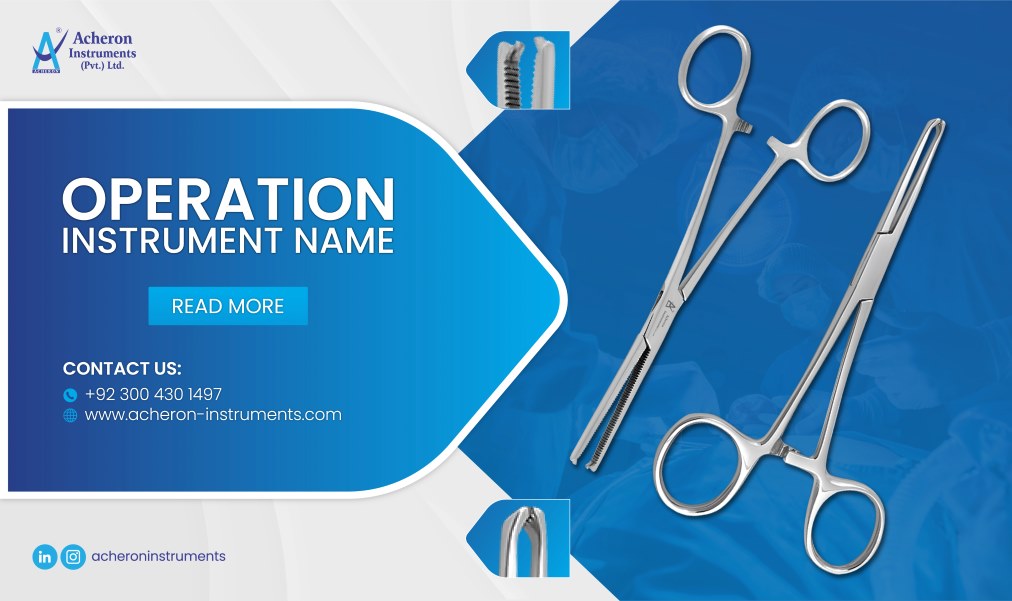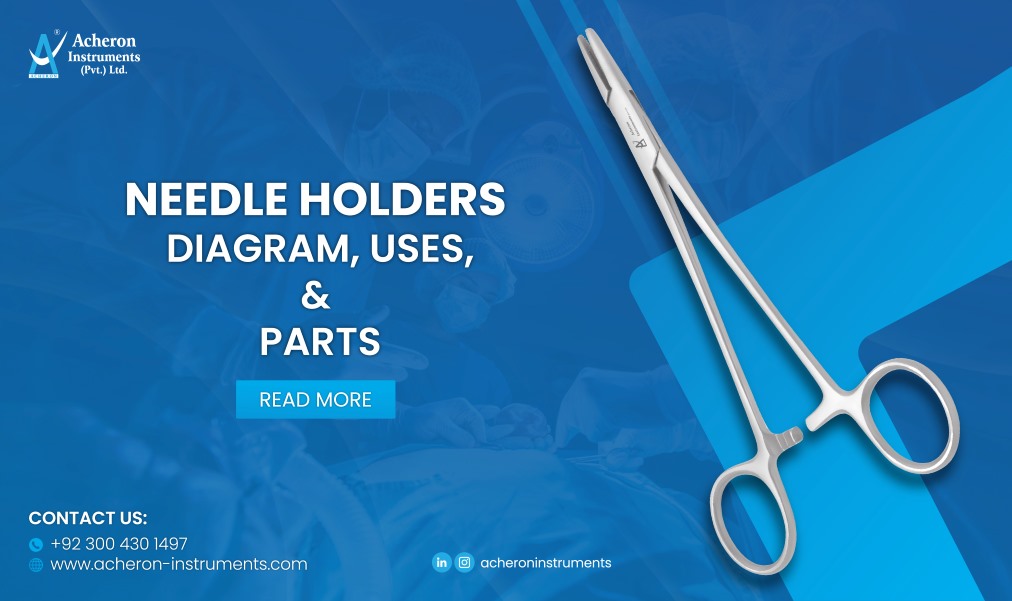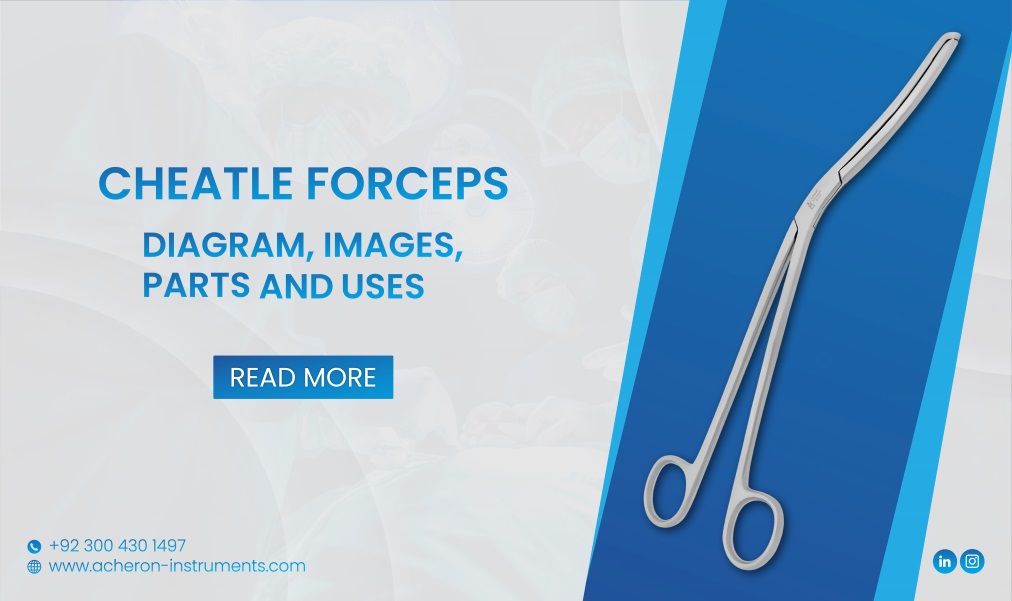.webp)
Have you ever wondered how healthcare operations streamline multiple tasks? From clinical to financial aspects, healthcare facilities have to ensure accuracy, consistency, and compliance at so many levels. This is where CPT codes step in, serving as an essential backbone to the entire healthcare system. This coding ensures smooth operations of payments, medical billing, patient care, etc. In this blog, we will discuss the CPT code for laparotomy exploratory in detail and much more. Let’s begin!
What is the CPT code for a laparotomy?
CPT Code: 49000 - Exploration, Abdomen, Exploratory Laparotomy with or without biopsy(s)
This code is used when a laparotomy procedure is performed to explore the area of the abdominal cavity. However, this code is applicable only for laparotomy without any additional specific procedures such as tumor removal or resection, etc. If other procedures are performed alongside laparotomy, those procedures must be coded separately with their respective codes.
If you are searching for some common clinical scenarios where you can use this particular code, here you go!
- Investigation of the abdominal cavity for causes such as inflammation, internal bleeding, or masses
- Locating the reason for bowel obstruction
- Emergency laparotomy to assess for internal injuries
- Identification of the source of infection (such as an abscess or a perforated bowel)
- Planned reopening of a recent laparotomy to assess the healing progress
What is the difference between CPT code 35840 and 49002?
Both codes are used for the re-exploration of previous surgeries, then what makes these two different? The codes CPT 35840 and CPT 49002 differ in terms of their purpose and the type of re-exploration. Let’s break it down for you!
CPT 35840: Exploration for Postoperative Hemorrhage
Use: applicable when there is a reoperation of the abdomen to manage hemorrhage via vessels and veins. This reoperation is done in order to inspect post-operative complications to inspect and correct the source of clotting, bleeding, or infection.
Clinical context: A person comes with a complaint of post-operative excessive bleeding who recently had repair of parastomal hernias. Doctors re-open the surgical area to assess the bleeding vessel and stop hemorrhage.
CPT 49002- Reopening of Recent Laparotomy
Use: This code is specifically applicable when surgeons perform reopening of the abdomen after a recent laparotomy. This can be due to multiple complications such as infection, general post-operative issues, or assessing the progress of healing.
Clinical context: A person comes with the signs of intra-abdominal infection post-abdominal surgery for bowel resection. Doctors open the abdominal area to clean the infection and drain the abscess causing it.
Key difference:
Procedure focus and complication:
- CPT 35840 is specified for post-surgery complications including blood clots, hemorrhage, or infections
- CPT 49002 is applicable for addressing complications such as organ malfunction, healing progress bleeding, infections, or any other unforeseen problem
Indications for CPT 35840:
- Severe pain in the abdomen after surgery
- Signs of blood clots, internal bleeding, or infection
Indications for CPT 49002:
- Severe abdominal pain after surgery
- Unidentified abnormalities in lab results
- Reporting of organ failure/dysfunction
- Unusual discharge
- Abnormal signs suggesting internal bleeding
What is the PCS code for exploratory laparotomy?
The ICD-10-PCS (International Classification of Diseases, 10th Revision, Procedure Coding System) is a standardized system used to code medical procedures performed in healthcare settings. The PCS (Procedure Coding system) for exploratory laparotomy is:
0WJG0ZZ: Inspection of the peritoneal cavity, open approach
This code is used to report an exploratory laparotomy when doctors inspect the peritoneal cavity using an open surgical approach. Moreover, unlike CPT codes, this approach focuses on recording the specific details of the surgical procedure. This includes its focus on certain body parts, approaches, and purposes.
Differences Between CPT and PCS Codes in Abdominal Surgery
PCS and CPT codes are two totally different coding systems used in the field of medicine. Also, these procedures are not only structured differently but also serve different purposes. Let’s debunk key differences between CPT and PCS codes in the context of abdominal surgeries:
|
Aspect |
PCS |
CPT |
|
Purpose |
In-patient coding procedure for hospital settings |
Outpatient procedure coding and billing |
|
Focus |
Component-based (body part, procedure approach, etc) |
Procedure-based |
|
Procedure detail |
Highly specific |
Generalized focus on the procedure |
|
Setting |
In-patient, hospitals |
Outpatient, physician offices |
|
Code length |
7 characters (each representing an aspect of the procedure) |
5 characters |
What is an exploratory laparotomy?
Exploratory laparotomy is a surgical procedure in which surgeons make a large incision in the abdominal wall. This is done for direct access into the abdominal cavity for diagnosing and treating multiple conditions. Through laparotomy procedures, surgeons can have a better look at your appendix, stomach, intestines, liver, kidneys, female reproductive organs, etc.
The conditions include:
- Unexplained pain
- Suspected tumors
- Internal bleeding
- Bowel obstruction
- Trauma
Surgeons use Laparotomy exploratory procedures when they have to diagnose and investigate abdominal issues. Such issues might not be possibly understood completely through other less invasive means. Also, this procedure is approached by surgeons when they have to face certain abdominal conditions. This includes abdominal trauma, tumors, pain, or other anomalies.
You may need an open surgery for managing a critical condition or to remove an organ or there is a possibility your surgeon may fix a problem when exploring this site. The laparotomy procedure involves granting access to the peritoneal cavity including the pelvis and abdomen by making an incision through the abdominal wall.
Difference between laparotomy exploratory and laparoscopy exploratory
Both procedures are used for the exploration and evaluation of the abdominal cavity. However, they differ in their invasiveness. approach, and the techniques used.
|
Laparotomy exploratory |
Laparoscopy exploratory |
|
More invasive procedure, requiring more time for recovery and healing |
Minimally invasive procedure leading to shorter recovery time |
|
Higher risk of complications due to large incisions |
Reduced risk of infection and lesser pain |
|
Surgeons have more detailed and unobstructed views of the organs due to large surgical incisions |
Smaller surgical incisions (usually 0.5 to 1 cm) with a limited view via inserting a laparoscope |
|
Direct hands-on view of the organs assisting surgeons with a comprehensive examination and intervention |
Laparoscope is inserted via incision, providing an illuminated and magnified view of the abdominal organs on the monitor |
|
generally preferable where a larger view and direct access to abdominal organs are necessary, extensive explorations and major surgical interventions |
generally more useful for diagnostic purposes including unexplained pain in the abdomen or certain gynecological issues including infertility issues
|
What is the CPT code for exploratory laparotomy drainage of an abscess?
Coding for Exploratory Laparotomy with Abscess Drainage (CPT 49020).
This code is used when the surgeon drains an area of abscess or infection by incising the abdomen. Furthermore, this procedure is done in the membrane lining of the abdominal contents excluding the appendix area. However, there are a few considerations that you must be aware of while coding for abscess drainage. Let’s find them out!
Key Considerations When Coding for Abscess Drainage via Laparotomy
- In-depth documentation: Ensure a thorough reporting of the procedure including the abscess length, size, and other relevant findings
- Abscess type: The type of the abscess can influence coding so always be specific about its type
- Clinical indications: outline the clinical necessity for laparotomy and drainage. Also, consider any symptoms/ lab results/ diagnostic imaging justifying the procedure
- Modifiers: use appropriate modifiers when there is a need to indicate certain situations. This may include bilateral or increased complexity procedures
- Additional procedures: don’t forget to code the additional procedures using appropriate CPT codes separately if they are performed alongside laparotomy.
What is the CPT code for exploratory laparotomy reopening?
CPT Code 49002 - Reopening of Recent Laparotomy
This code is used when surgeons re-open an abdominal incision made during a previously performed laparotomy. It is usually done when the doctors need to have a look at certain issues and complications arising shortly after the surgery.
Moreover, this particular procedure is used to manage complications including organ malfunction, infections, or other unforeseen problems following the laparotomy. Here are a few indications of undergoing this procedure:
Signs of unusual discharge, fever, or infection
- Post-laparotomy severe pain
- Alarming signs indicating internal bleeding
- Unexplained findings in imaging or lab tests
- When to Use Reopening Codes?
Understating when to use reopening codes and their implication is important for healthcare providers, billing professionals, and coders. This is essential for maintaining an efficient and organized workflow. You can use these re-opening codes in :
- Monitoring healing progress
- Comprehensive documentation
- Manage post-operative complications
- Resource allocations
- Patient management and counseling
What is the CPT code for exploratory laparotomy lysis of adhesions?
CPT 44005: Coding for Exploratory Laparotomy with Lysis of Adhesions
This code is applicable when the laparotomy surgery involves the removal of adhesions that may have formed between tissues or organs. These adhesions can be the result of previous surgeries, inflammations, or infections leading to further complications. Such complications include blockage of the intestines, infertility issues leading to severe pain, or permanent damage to internal organs.
Surgical adhesions are generally fibrous bands of scar tissue that can form after surgery. Also, these are usually formed between the internal tissues or organs leading to multiple complications. Here are a few main causes of surgical adhesions:
- Inflammation/infections
- Previous surgeries
- Foreign bodies
- Trauma/ physical injury to the abdomen
Procedures involving lysis of adhesions
Laparoscopic Adhesiolysis: This procedure involves making small incisions in your abdomen while inserting a camera. This one is a minimally invasive method for removing lysis of adhesion.
Open surgery/ laparotomy: In this procedure, a large incision is made and the doctor removes the adhesions by a direct hands-on approach.
Coding best practices in medical procedures
Use the accurate code that best describes the specific procedure. Also, avoid using the general codes when you can apply the specific ones. For example, you can differentiate between a laparoscopic procedure (CPT 58660) and an open procedure (CPT-44005) for lysis of adhesion procedures.
Keep a check on regular updates on coding systems like CPT and ICD-10 to reflect the latest guidelines
Report detailed documentation of the procedure involving surgical approach, body parts, and any complications encountered.
Make proper use of the modifiers to provide additional information about the procedure. For instance,
- Modifier 22 (Increased Procedural Services) is an easier indication that the service provided was more extensive than usual
- Modifier 59 (Distinct Procedural Service) is used when two procedures are performed during different surgical sessions
- Modifier 78 (Unplanned Return to the Operating Room) is used when the patient has to return to the operating room for unforeseen complications
What is the CPT code for exploratory laparotomy total abdominal hysterectomy?
CPT 58150- Coding for Exploratory Laparotomy with Total Abdominal Hysterectomy
This code is applicable for complete hysterectomy procedures. In this procedure, the specialists remove the cervix and uterus by making an abdominal incision. Additionally, fallopian tubes and ovaries are also removed partially or totally as per surgical requirements.
Indications for Total Abdominal Hysterectomy (TAH)
Specialists perform this procedure for various indications including:
- Benign gynecological conditions such as uterine fibroids, abnormal uterine bleeding, adenomyosis, etc.
- Malignant or pre-malignant conditions such as ovarian cancer, cervical cancer, severe, endometrial hyperplasia etc.
- Failure of conservative treatments including invasive and non-invasive interventions
- Surgical steps for Total Abdominal Hysterectomy (TAH)
Here we are listing down a standard sequence for TAH. However, variations can be added based on the patient’s anatomy, condition, or other surgical requirements.
- Opening Abdomen for exploration
- Identify round ligament and peritoneum
- Look for Infundibulopelvic Ligament and Adnexa if hysterectomy is done alongside Salpingo-Oophorectomy
- Mobilization of the bladder at the middle of the cervix
- Clamping and cutting of the cardinal ligament uterine vessels
- Amputation and closure of the vagina
- Closure of abdomen
Here's a step-by-step guide to choosing the right CPT code for your laparotomy exploratory procedures:
Step 1: Determine the Type of Procedure:
-
Exploratory Laparotomy: This code (CPT 49000) covers an open incision through the abdominal wall to explore and potentially address intra-abdominal pathology. It includes a biopsy if performed.
-
Laparoscopic Exploration: This code (CPT 49320) encompasses a laparoscopic examination of the abdomen and pelvis to diagnose or rule out potential issues.
Step 2: Consider Modifiers:
-
Modifier 59: Use this modifier if you perform a separate, distinct procedure during the laparoscopy alongside the exploration, like adhesiolysis (CPT 58740) or biopsy (CPT 30525).
-
Modifier 76: This modifier applies if you perform a repeat laparoscopy within the same global period of the initial exploration due to a complication or incomplete visualization.
-
Modifier 22: Use this modifier if you perform an unrelated procedure during the same operative session as the laparotomy (e.g., appendectomy) - separate billing would be appropriate.
Step 3: Account for Additional Procedures:
-
Biopsy: If you perform a biopsy during the exploration, it's separately reported using the appropriate CPT code based on the tissue or organ biopsied (e.g., liver biopsy - CPT 47535).
-
Drainage Procedures: Codes like CPT 49080 (abdominal paracentesis) or CPT 49060 (percutaneous drainage of abscess) would apply if you perform draining procedures alongside the exploration.
Step 4: Refer to Coding Resources:
Consult coding manuals and clarifications from official sources like the American Medical Association (AMA) for specific guidance on complex scenarios or new procedures.
Remember: Accurate CPT coding is crucial for proper reimbursement and avoiding denials. Always carefully consider the nature of the procedure, any modifiers involved, and additional interventions performed alongside the exploration. If you're unsure about the appropriate code, consulting with a coding specialist or referencing official resources is always recommended.
Additional Tips:
-
Document the rationale for your chosen CPT code in your operative notes.
-
Stay updated on coding changes and clarifications released by the AMA.
-
Consider utilizing practice management software with built-in coding features for assistance.
By following these steps and best practices, you can ensure you're assigning the correct CPT codes for your laparotomy exploratory procedures, promoting efficient billing and accurate reimbursement.
Conclusion
Laparotomy exploratory has numerous surgical benefits including the proper diagnosis and treatment plan for a vast range of abdominal conditions. Proper coding is essential for accurate billing with the designated CPT codes.
Moreover, with the proper collaboration of the surgeons and coding professionals, they ensure that the documentation accurately reflects the complexity of the procedure. This is important as it facilitates communication with the payers and supports the delivery of quality healthcare.
Looking for surgical instruments used in laparotomy exploratory?
Surgical instruments are an integral part of every operating room. however, it is important that you choose the right surgical tool for your specific surgical procedure. This is important because each tool has its distinctive characteristics that surgeons must use for the intended purpose only.
Looking for high-quality surgical instruments? Look no further. We at Acheron Instruments offer high-grade German stainless steel material surgical tools that are durable, robust, reusable, and easily sterilizable. Also, our products are available at the most reasonable prices without compromising on quality. We have a wide range of surgical forceps, tweezer clamps, retractors, needle holders, and surgical scissors made from premium quality German stainless steel material. Our high-quality instruments are robust, durable, and reliable and last in your operating rooms for longer durations. Moreover, you can also order customized products from us at the best pricing.
A high-quality tool will not only last longer in your operating rooms but will also require fewer repairs or replacements in the long run. By high-quality surgical tools, we certainly mean ISO-certified, German stainless steel forged surgical equipment adhering to AAMI standards.
FAQ’s related to CPT code for laparotomy exploratory
Which surgical instruments do we offer for laparotomy exploratory procedures?
We have a wide range of surgical instruments that surgeons use for laparotomy exploratory including scalpels, scissors, retractors, suction devices, hemostatic forceps, and tissue forceps to name a few.
What is the material Acheron Instruments use for surgical tools?
Our surgical tools are crafted from German-grade stainless steel. This high-quality material is known for its corrosion resistance, ease of cleaning, and capacity to endure repeated sterilization processes. These qualities guarantee the instrument's long-lasting durability.
Why buy from Acheron Instruments?
We have gained trust across the globe with our impeccable customer service and high-quality surgical tools. Our well-reputed company is globally known for its unparalleled expertise and trustworthiness.
How to order from Acheron Instruments?
You can contact us via email or the contact number given on our page. Our representative will answer all your queries shortly.








